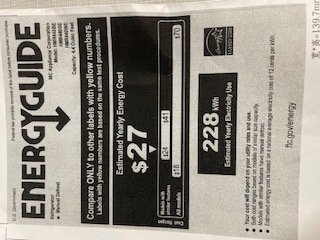CharlieO.
Guru
- Joined
- Sep 21, 2020
- Messages
- 1,558
- Location
- Lake Champlain Vermont, USA
- Vessel Name
- Luna C.
- Vessel Make
- 1977 Marine Trader 34DC
If looking at the specs of a 12v refer and it claims rated current to be 9 amps
how does that convert over to amp hr. usage per day?
If it is 9 amps then it would be safe to say that my alternator would have no problem keeping it running while underway?
I only have one battery bank of two batteries for start/house loads with the basic Motorola alternator on my Lehman.
I would am also probably going to add a small house bank in the future and would like to size it correctly to run the fridge for at least 24 hrs. at anchor or docked without shorepower, but would at least like to run the unit while out cruising to start the season.
*
Thanks for any info.
how does that convert over to amp hr. usage per day?
If it is 9 amps then it would be safe to say that my alternator would have no problem keeping it running while underway?
I only have one battery bank of two batteries for start/house loads with the basic Motorola alternator on my Lehman.
I would am also probably going to add a small house bank in the future and would like to size it correctly to run the fridge for at least 24 hrs. at anchor or docked without shorepower, but would at least like to run the unit while out cruising to start the season.
*
Thanks for any info.

